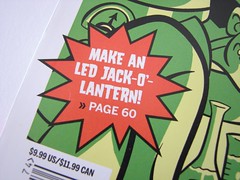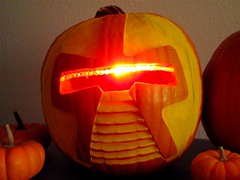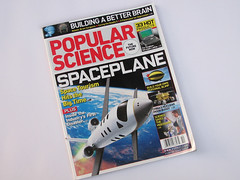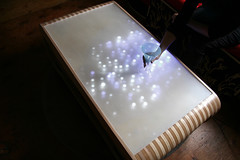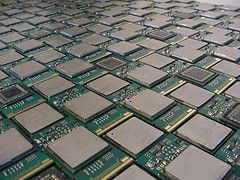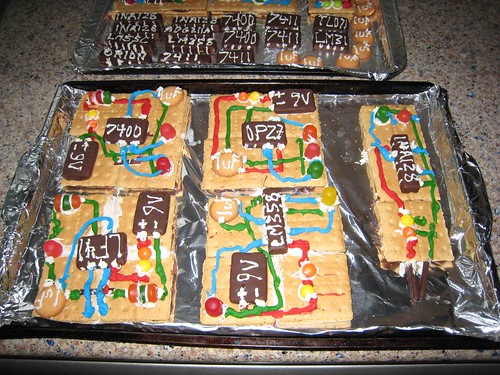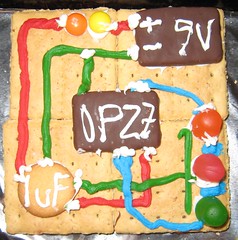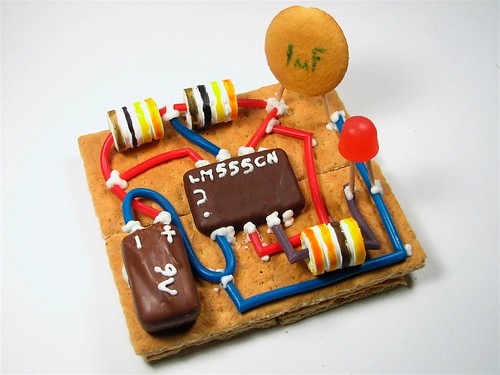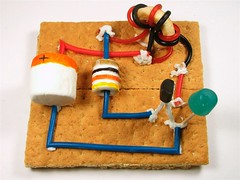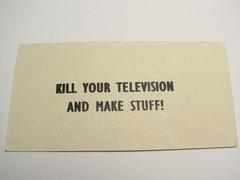Yay! We finally got our copy of the Make: Halloween Edition.
This special issue is actually available in two different covers, but we particularly like thisversion because of that little starburst: “Make an LED Jack-O’-Lantern!”
On page 60, you can find the article that we wrote about how to build the Larson Scanner (named after Glen A. Larson); a scanning eye for your old-school Cylon or KITT pumpkin projects.
The article is actually a slightly updated version of our project from last Halloween, Make A Cylon Jack-O-Lantern. Last year’s how-to is still online— and we have recently checked to make sure that all the parts on the parts list are still available.
Either way, let’s see those Cylons! If you build one, please post your pictures in the Evil Mad Science Auxiliary.





